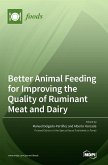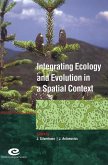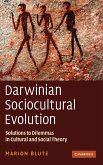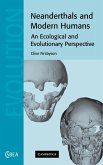Gottfried Hohmann / Martha M. Robbins / Christophe Boesch (eds.)
Feeding Ecology in Apes and Other Primates
Herausgeber: Hohmann, Gottfried; Boesch, Christophe; Robbins, Martha M.
Gottfried Hohmann / Martha M. Robbins / Christophe Boesch (eds.)
Feeding Ecology in Apes and Other Primates
Herausgeber: Hohmann, Gottfried; Boesch, Christophe; Robbins, Martha M.
- Gebundenes Buch
- Merkliste
- Auf die Merkliste
- Bewerten Bewerten
- Teilen
- Produkt teilen
- Produkterinnerung
- Produkterinnerung
Feeding Ecology in Apes and Other Primates focuses on evolutionary perspectives of the complex interactions between the environment, food sources, physiology and behaviour in primates. This highly interdisciplinary volume provides a benchmark to assess dietary alterations that affected human evolution by putting the focus on the diet of hominid primates. It also offers a fresh perspective on the behavioural ecology of the last common ancestor by integrating corresponding information from both human and non-human primates. The potential of innovations of applied biotechnology are also explored…mehr
Andere Kunden interessierten sich auch für
![Better Animal Feeding for Improving the Quality of Ruminant Meat and Dairy Better Animal Feeding for Improving the Quality of Ruminant Meat and Dairy]() Better Animal Feeding for Improving the Quality of Ruminant Meat and Dairy53,99 €
Better Animal Feeding for Improving the Quality of Ruminant Meat and Dairy53,99 €![Integrating Ecology and Evolution in a Spatial Context Integrating Ecology and Evolution in a Spatial Context]() Jonathan Silvertown / Janis Antonovics (eds.)Integrating Ecology and Evolution in a Spatial Context142,99 €
Jonathan Silvertown / Janis Antonovics (eds.)Integrating Ecology and Evolution in a Spatial Context142,99 €![NUTRITIONAL FEEDING OF FISH AND SHRIMPS IN INDIA NUTRITIONAL FEEDING OF FISH AND SHRIMPS IN INDIA]() Syed AliNUTRITIONAL FEEDING OF FISH AND SHRIMPS IN INDIA36,99 €
Syed AliNUTRITIONAL FEEDING OF FISH AND SHRIMPS IN INDIA36,99 €![Who Wants to Be a Scientist? Who Wants to Be a Scientist?]() Nancy RothwellWho Wants to Be a Scientist?86,99 €
Nancy RothwellWho Wants to Be a Scientist?86,99 €![Biology of Fibrous Composites Biology of Fibrous Composites]() Anthony Charles NevilleBiology of Fibrous Composites99,99 €
Anthony Charles NevilleBiology of Fibrous Composites99,99 €![Darwinian Sociocultural Evolution Darwinian Sociocultural Evolution]() Marion BluteDarwinian Sociocultural Evolution53,99 €
Marion BluteDarwinian Sociocultural Evolution53,99 €![Neanderthals and Modern Humans Neanderthals and Modern Humans]() Clive FinlaysonNeanderthals and Modern Humans143,99 €
Clive FinlaysonNeanderthals and Modern Humans143,99 €-
-
-
Feeding Ecology in Apes and Other Primates focuses on evolutionary perspectives of the complex interactions between the environment, food sources, physiology and behaviour in primates. This highly interdisciplinary volume provides a benchmark to assess dietary alterations that affected human evolution by putting the focus on the diet of hominid primates. It also offers a fresh perspective on the behavioural ecology of the last common ancestor by integrating corresponding information from both human and non-human primates. The potential of innovations of applied biotechnology are also explored to set new standards for future research on feeding ecology, and new information on feeding ecology in humans, apes and other primates is synthesized to help refine or modify current models of socioecology. By taking a comparative view, this book will be interesting to primatologists, anthropologists, behavioural ecologists and evolutionary biologists who want to understand better non-human primates, and the primate that is us.
Produktdetails
- Produktdetails
- Verlag: Cambridge University Press
- Seitenzahl: 540
- Erscheinungstermin: 23. November 2015
- Englisch
- Abmessung: 235mm x 157mm x 36mm
- Gewicht: 1018g
- ISBN-13: 9780521858373
- ISBN-10: 0521858372
- Artikelnr.: 22745317
- Herstellerkennzeichnung
- Libri GmbH
- Europaallee 1
- 36244 Bad Hersfeld
- gpsr@libri.de
- Verlag: Cambridge University Press
- Seitenzahl: 540
- Erscheinungstermin: 23. November 2015
- Englisch
- Abmessung: 235mm x 157mm x 36mm
- Gewicht: 1018g
- ISBN-13: 9780521858373
- ISBN-10: 0521858372
- Artikelnr.: 22745317
- Herstellerkennzeichnung
- Libri GmbH
- Europaallee 1
- 36244 Bad Hersfeld
- gpsr@libri.de
GOTTFRIED HOHMANN is a Research Fellow in the Department of Primatology at the Max Planck Institute for Evolutionary Anthropology in Leipzig, Germany, researching bonobos. He has also co-edited Behavioural Differences in Chimpanzees and Bonobos with Christophe Boesch and Linda Marchant (2002, ISBN 0521803543).
MARTHA M. ROBBINS is a Research Associate in the Primatology Department of the Max Planck Institute for Evolutionary Anthropology. She studies the behavioural ecology and reproductive strategies of gorillas. She has also co-edited a volume Mountain Gorillas (2001 ISBN 0521780047) with Pascal Sicotte and Kelly Stewart.
CHRISTOPHE BOESCH is Director of the Department of Primatology at the Max Plank Institute for Evolutionary Anthropology. He has also co-edited books including Behavioural Differences in Chimpanzees and Bonobos, with Gottfried Hohmann and Linda Marchant (2002, ISBN 0521803543), as well as Monogamy with Ulrich Reichard (2003, ISBN 0521819733).
MARTHA M. ROBBINS is a Research Associate in the Primatology Department of the Max Planck Institute for Evolutionary Anthropology. She studies the behavioural ecology and reproductive strategies of gorillas. She has also co-edited a volume Mountain Gorillas (2001 ISBN 0521780047) with Pascal Sicotte and Kelly Stewart.
CHRISTOPHE BOESCH is Director of the Department of Primatology at the Max Plank Institute for Evolutionary Anthropology. He has also co-edited books including Behavioural Differences in Chimpanzees and Bonobos, with Gottfried Hohmann and Linda Marchant (2002, ISBN 0521803543), as well as Monogamy with Ulrich Reichard (2003, ISBN 0521819733).
Preface; Introduction: Primate feeding ecology: an integrative approach
Martha M. Robbins and Gottfried Hohmann; Part I. Field Studies:
Introduction Peter S. Rodman; 1. Variability of the feeding ecology of
eastern gorillas Martha M. Robbins, John Bosco Nkurunungi and Alastair
McNeilage; 2. Sympatric western gorilla and mangabey diet: reexamination of
ape and monkey foraging strategies Diane M. Doran-Sheehy, Natasha F. Shah
and Lisa A. Heimbauer; 3. Effects of fruit scarcity on foraging strategies
of sympatric gorillas and chimpanzees Juichi Yamagiwa and Augustin Kanyunyi
Basabose; 4. Chimpanzee feeding ecology and comparisons with sympatric
gorillas in the Goualougo Triangle, Republic of Congo David Morgan and
Crickette Sanz; 5. Frugivory and gregariousness of Salonga bonobos and
Gashaka chimpanzees: the abundance and nutritional quality of fruit
Gottfried Hohmann, Andrew Fowler, Volker Sommer and Sylvia Ortmann; 6.
Feeding ecology of savanna chimpanzees (Pan troglodytes verus) at Fongoli,
Senegal Jill D. Pruetz; 7. Food choice in Taï chimpanzees: are cultural
differences present? Christophe Boesch, Zoro Bertin Goné Bi, Dean Anderson
and Daniel Stahl; 8. The effects of food size, rarity, and processing
complexity on white-faced capuchins' visual attention to foraging
conspecifics Susan Perry and Juan Carlos Ordoñez Jiménez; Part II. Testing
Theories: Introduction Richard W. Wrangham; 9. Primate foraging
adaptations: two research strategies Stuart A. Altmann; 10. The predictive
power of socioecological models: a reconsideration of resource
characteristics, agonism, and dominance hierarchies Andreas Koenig and
Carola Borries; 11. Hunger and aggression in capuchin monkeys Charles
Janson and Erin Vogel; 12. How does food availability limit the population
density of white-bearded gibbons? Andrew J. Marshall and Mark Leighton; 13.
Influence of fruit availability on Sumatran orangutan sociality and
reproduction Serge A. Wich, Martine L. Geurts, Tatang Mitra Setia and Sri
Suci Utami-Atmoko; 14. Central place provisioning: the Hadza as an example
Frank W. Marlowe; Part III. Analyzing nutritional ecology: Introduction
Katharine Milton; 15. Estimating the quality and composition of wild animal
diets - a critical survey of methods Sylvia Ortmann, Brenda J. Bradley,
Caroline Stolter and Jörg U. Ganzhorn; 16. The possible application of
novel marker methods for estimating dietary intake and nutritive value in
primates Robert W. Mayes; 17. Energy intake by wild chimpanzees and
orangutans: methodological considerations and a preliminary comparison
Nancy Lou Conklin-Brittain, Cheryl D. Knott and Richard W. Wrangham; 18.
The role of sugar in diet selection in redtail and red colobus monkeys Lisa
Danish, Colin A. Chapman, Mary Beth Hall, Karyn D. Rode and Cedric
O'Driscoll Worman; 19. Primate sensory systems and foraging behavior
Nathaniel J. Dominy, Peter W. Lucas and Nur Supardi Noor.
Martha M. Robbins and Gottfried Hohmann; Part I. Field Studies:
Introduction Peter S. Rodman; 1. Variability of the feeding ecology of
eastern gorillas Martha M. Robbins, John Bosco Nkurunungi and Alastair
McNeilage; 2. Sympatric western gorilla and mangabey diet: reexamination of
ape and monkey foraging strategies Diane M. Doran-Sheehy, Natasha F. Shah
and Lisa A. Heimbauer; 3. Effects of fruit scarcity on foraging strategies
of sympatric gorillas and chimpanzees Juichi Yamagiwa and Augustin Kanyunyi
Basabose; 4. Chimpanzee feeding ecology and comparisons with sympatric
gorillas in the Goualougo Triangle, Republic of Congo David Morgan and
Crickette Sanz; 5. Frugivory and gregariousness of Salonga bonobos and
Gashaka chimpanzees: the abundance and nutritional quality of fruit
Gottfried Hohmann, Andrew Fowler, Volker Sommer and Sylvia Ortmann; 6.
Feeding ecology of savanna chimpanzees (Pan troglodytes verus) at Fongoli,
Senegal Jill D. Pruetz; 7. Food choice in Taï chimpanzees: are cultural
differences present? Christophe Boesch, Zoro Bertin Goné Bi, Dean Anderson
and Daniel Stahl; 8. The effects of food size, rarity, and processing
complexity on white-faced capuchins' visual attention to foraging
conspecifics Susan Perry and Juan Carlos Ordoñez Jiménez; Part II. Testing
Theories: Introduction Richard W. Wrangham; 9. Primate foraging
adaptations: two research strategies Stuart A. Altmann; 10. The predictive
power of socioecological models: a reconsideration of resource
characteristics, agonism, and dominance hierarchies Andreas Koenig and
Carola Borries; 11. Hunger and aggression in capuchin monkeys Charles
Janson and Erin Vogel; 12. How does food availability limit the population
density of white-bearded gibbons? Andrew J. Marshall and Mark Leighton; 13.
Influence of fruit availability on Sumatran orangutan sociality and
reproduction Serge A. Wich, Martine L. Geurts, Tatang Mitra Setia and Sri
Suci Utami-Atmoko; 14. Central place provisioning: the Hadza as an example
Frank W. Marlowe; Part III. Analyzing nutritional ecology: Introduction
Katharine Milton; 15. Estimating the quality and composition of wild animal
diets - a critical survey of methods Sylvia Ortmann, Brenda J. Bradley,
Caroline Stolter and Jörg U. Ganzhorn; 16. The possible application of
novel marker methods for estimating dietary intake and nutritive value in
primates Robert W. Mayes; 17. Energy intake by wild chimpanzees and
orangutans: methodological considerations and a preliminary comparison
Nancy Lou Conklin-Brittain, Cheryl D. Knott and Richard W. Wrangham; 18.
The role of sugar in diet selection in redtail and red colobus monkeys Lisa
Danish, Colin A. Chapman, Mary Beth Hall, Karyn D. Rode and Cedric
O'Driscoll Worman; 19. Primate sensory systems and foraging behavior
Nathaniel J. Dominy, Peter W. Lucas and Nur Supardi Noor.
Preface; Introduction: Primate feeding ecology: an integrative approach
Martha M. Robbins and Gottfried Hohmann; Part I. Field Studies:
Introduction Peter S. Rodman; 1. Variability of the feeding ecology of
eastern gorillas Martha M. Robbins, John Bosco Nkurunungi and Alastair
McNeilage; 2. Sympatric western gorilla and mangabey diet: reexamination of
ape and monkey foraging strategies Diane M. Doran-Sheehy, Natasha F. Shah
and Lisa A. Heimbauer; 3. Effects of fruit scarcity on foraging strategies
of sympatric gorillas and chimpanzees Juichi Yamagiwa and Augustin Kanyunyi
Basabose; 4. Chimpanzee feeding ecology and comparisons with sympatric
gorillas in the Goualougo Triangle, Republic of Congo David Morgan and
Crickette Sanz; 5. Frugivory and gregariousness of Salonga bonobos and
Gashaka chimpanzees: the abundance and nutritional quality of fruit
Gottfried Hohmann, Andrew Fowler, Volker Sommer and Sylvia Ortmann; 6.
Feeding ecology of savanna chimpanzees (Pan troglodytes verus) at Fongoli,
Senegal Jill D. Pruetz; 7. Food choice in Taï chimpanzees: are cultural
differences present? Christophe Boesch, Zoro Bertin Goné Bi, Dean Anderson
and Daniel Stahl; 8. The effects of food size, rarity, and processing
complexity on white-faced capuchins' visual attention to foraging
conspecifics Susan Perry and Juan Carlos Ordoñez Jiménez; Part II. Testing
Theories: Introduction Richard W. Wrangham; 9. Primate foraging
adaptations: two research strategies Stuart A. Altmann; 10. The predictive
power of socioecological models: a reconsideration of resource
characteristics, agonism, and dominance hierarchies Andreas Koenig and
Carola Borries; 11. Hunger and aggression in capuchin monkeys Charles
Janson and Erin Vogel; 12. How does food availability limit the population
density of white-bearded gibbons? Andrew J. Marshall and Mark Leighton; 13.
Influence of fruit availability on Sumatran orangutan sociality and
reproduction Serge A. Wich, Martine L. Geurts, Tatang Mitra Setia and Sri
Suci Utami-Atmoko; 14. Central place provisioning: the Hadza as an example
Frank W. Marlowe; Part III. Analyzing nutritional ecology: Introduction
Katharine Milton; 15. Estimating the quality and composition of wild animal
diets - a critical survey of methods Sylvia Ortmann, Brenda J. Bradley,
Caroline Stolter and Jörg U. Ganzhorn; 16. The possible application of
novel marker methods for estimating dietary intake and nutritive value in
primates Robert W. Mayes; 17. Energy intake by wild chimpanzees and
orangutans: methodological considerations and a preliminary comparison
Nancy Lou Conklin-Brittain, Cheryl D. Knott and Richard W. Wrangham; 18.
The role of sugar in diet selection in redtail and red colobus monkeys Lisa
Danish, Colin A. Chapman, Mary Beth Hall, Karyn D. Rode and Cedric
O'Driscoll Worman; 19. Primate sensory systems and foraging behavior
Nathaniel J. Dominy, Peter W. Lucas and Nur Supardi Noor.
Martha M. Robbins and Gottfried Hohmann; Part I. Field Studies:
Introduction Peter S. Rodman; 1. Variability of the feeding ecology of
eastern gorillas Martha M. Robbins, John Bosco Nkurunungi and Alastair
McNeilage; 2. Sympatric western gorilla and mangabey diet: reexamination of
ape and monkey foraging strategies Diane M. Doran-Sheehy, Natasha F. Shah
and Lisa A. Heimbauer; 3. Effects of fruit scarcity on foraging strategies
of sympatric gorillas and chimpanzees Juichi Yamagiwa and Augustin Kanyunyi
Basabose; 4. Chimpanzee feeding ecology and comparisons with sympatric
gorillas in the Goualougo Triangle, Republic of Congo David Morgan and
Crickette Sanz; 5. Frugivory and gregariousness of Salonga bonobos and
Gashaka chimpanzees: the abundance and nutritional quality of fruit
Gottfried Hohmann, Andrew Fowler, Volker Sommer and Sylvia Ortmann; 6.
Feeding ecology of savanna chimpanzees (Pan troglodytes verus) at Fongoli,
Senegal Jill D. Pruetz; 7. Food choice in Taï chimpanzees: are cultural
differences present? Christophe Boesch, Zoro Bertin Goné Bi, Dean Anderson
and Daniel Stahl; 8. The effects of food size, rarity, and processing
complexity on white-faced capuchins' visual attention to foraging
conspecifics Susan Perry and Juan Carlos Ordoñez Jiménez; Part II. Testing
Theories: Introduction Richard W. Wrangham; 9. Primate foraging
adaptations: two research strategies Stuart A. Altmann; 10. The predictive
power of socioecological models: a reconsideration of resource
characteristics, agonism, and dominance hierarchies Andreas Koenig and
Carola Borries; 11. Hunger and aggression in capuchin monkeys Charles
Janson and Erin Vogel; 12. How does food availability limit the population
density of white-bearded gibbons? Andrew J. Marshall and Mark Leighton; 13.
Influence of fruit availability on Sumatran orangutan sociality and
reproduction Serge A. Wich, Martine L. Geurts, Tatang Mitra Setia and Sri
Suci Utami-Atmoko; 14. Central place provisioning: the Hadza as an example
Frank W. Marlowe; Part III. Analyzing nutritional ecology: Introduction
Katharine Milton; 15. Estimating the quality and composition of wild animal
diets - a critical survey of methods Sylvia Ortmann, Brenda J. Bradley,
Caroline Stolter and Jörg U. Ganzhorn; 16. The possible application of
novel marker methods for estimating dietary intake and nutritive value in
primates Robert W. Mayes; 17. Energy intake by wild chimpanzees and
orangutans: methodological considerations and a preliminary comparison
Nancy Lou Conklin-Brittain, Cheryl D. Knott and Richard W. Wrangham; 18.
The role of sugar in diet selection in redtail and red colobus monkeys Lisa
Danish, Colin A. Chapman, Mary Beth Hall, Karyn D. Rode and Cedric
O'Driscoll Worman; 19. Primate sensory systems and foraging behavior
Nathaniel J. Dominy, Peter W. Lucas and Nur Supardi Noor.









